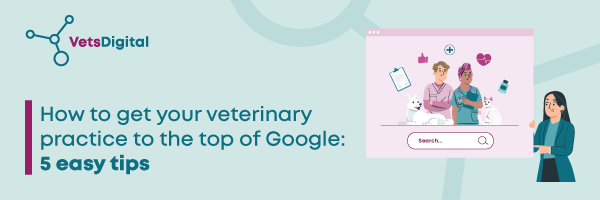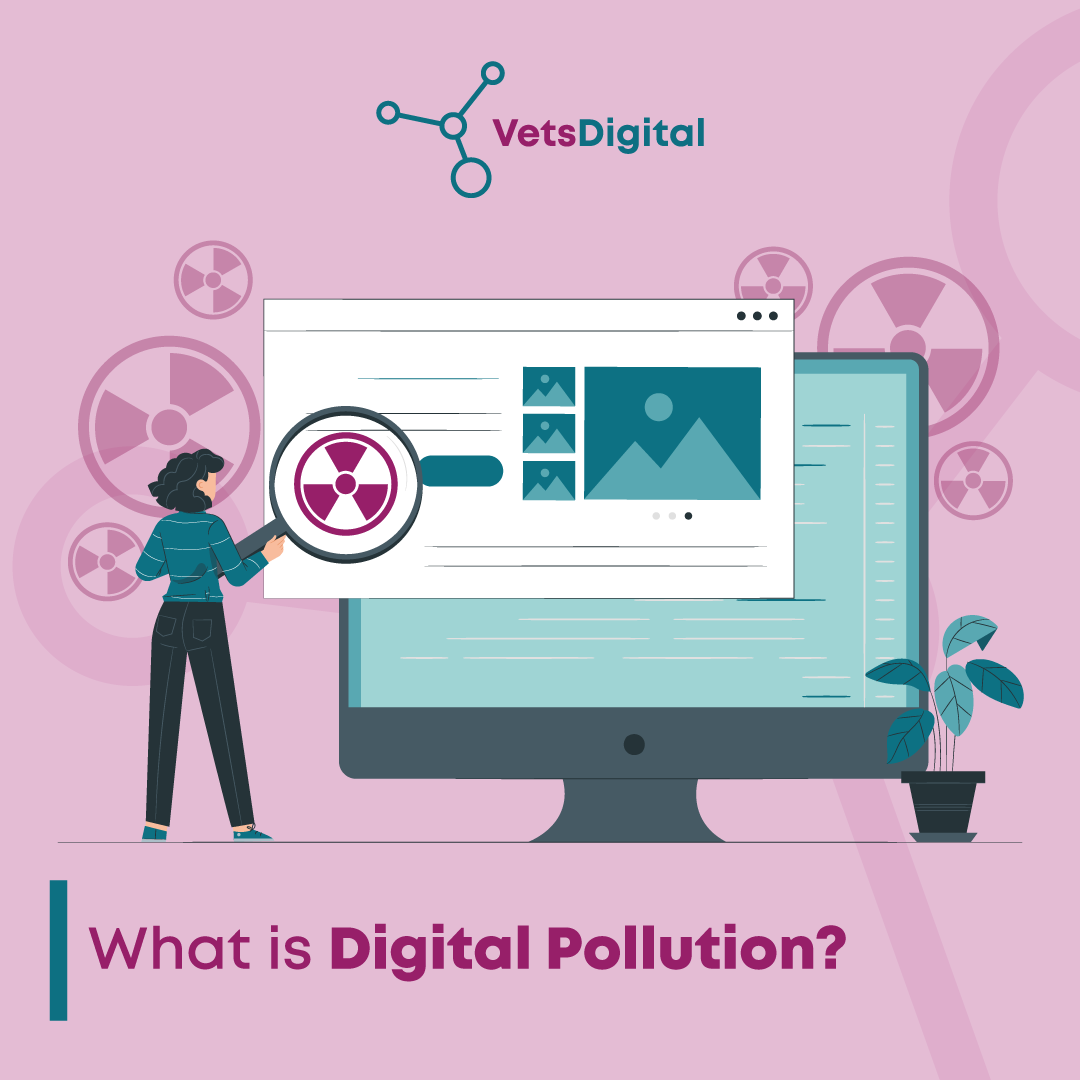Google, News, SEO,
How to get your veterinary practice to the top of Google: 5 easy tips!
It’s no secret that there’s a lot of competition among veterinary businesses online, and the only way to ensure that you aren’t being out-performed by your competitor down the road is to develop and implement a strong digital strategy with a clear focus on obtaining highly visible ranking positions in search engine results pages (SERPs).
You can employ many tactics to boost your ranking positions, including many that are very straightforward. To help you get started, here are five simple tips that can drive meaningful results, help your practice boost awareness of your brand, and ultimately connect you with local pet owners.

1. Claim and optimise your Google My Business Profile
Your Google Business Profile, formerly known as Google My Business, plays a crucial role in managing how your veterinary practice appears on Google Maps and Google Search. Optimising your practice’s profile [1] is one of the simplest and most effective ways to enhance your online visibility.
With the ability to make updates to your Google Business Profile at any time, you have full control over how key attributes of your practice are presented online. This includes updating your opening hours for holidays and ensuring your contact information is always up-to-date, making it easy for pet owners to reach out to you for assistance and advice.
Google Reviews, which are also featured on your Google Business Profile, offer an additional avenue for building trust with your audience. While pet owners may not click through to read the reviews, they often consider the star rating of your business in the first few seconds. Remember, Google sees a mix of positive and negative reviews as more authentic [2]. Moreover, you can respond to those reviews, a valuable opportunity to show that you value feedback and care about your clients and their beloved pets.
2. Create and publish relevant content for pet owners
Your website is an ideal place to publish high-quality content in various formats, including articles, blog posts, and videos. Your content should always be fully optimised and incorporate keywords that will improve your website’s discoverability in search results.
Let’s say you have created a new blog post that highlights the importance of regular parasite protection and helps build awareness of your health plan. In the digital marketing world, this is what we call a ‘top-of-the-funnel’ piece of content, and to ensure that your health plan is a success, you need as many people as possible to know that you are offering it.
Keywords are at the heart of every content optimisation strategy, so it’s important to use a keyword tool to identify which words and phrases you should include to reach your target audience of pet owners who are looking for flea treatment, for example. You may also want to incorporate some semantically related keywords, which provide search engines with additional context that should benefit your rankings.
3. Optimise your veterinary practice website for mobile first
Mobile devices account for well over 50% [3] of all website traffic, which highlights the importance of ensuring that your website is optimised for both mobile and desktop browsing.
There are a number of things to keep in mind here, but one of the most important things to ensure is that your desktop and mobile sites contain the same content. Responsive web design is one of the best techniques to use, as it uses media queries to transition designs automatically for an array of different devices, screen sizes and platforms.
It is also important to remember that mobile users want the websites they visit to load quickly. In practice, numerous considerations must be made here, including ensuring that images and video content are optimised for speed and avoiding using custom fonts unnecessarily, which can increase page load time and negatively impact your web traffic.
4. Fix broken links and remove duplicate pages
Broken links can impact SEO in various ways, including preventing search engine crawlers from indexing your content. Don’t forget that search engines only want to recommend the best quality websites to their users, so if your veterinary practice website doesn’t look well maintained or up-to-date, you aren’t going to rank well in the SERPs we mentioned earlier.
Broken links can also be incredibly frustrating for pet owners, who are eager to find answers to their questions. This can negatively impact their opinions about the quality and trustworthiness of your practice.
Broken links (commonly known as 404s) can occur for a variety of reasons, including when pages are moved to a new URL or deleted altogether, when changes are made to the structure of a website, and when URLs are formatted incorrectly. Conducting a simple audit of your site will highlight broken links, allowing you to make the necessary fixes to improve the user experience (UX) you are providing.
Duplicate content refers to content that is either identical or shares many similarities with another piece of content anywhere online. To ensure that you aren’t damaging your online rankings, it is vital to ensure that your content is unique to your practice and contains valuable information that pet owners can’t find anywhere else. To do this, we recommend auditing your site and efficiently addressing any potential issues of content duplication that you discover.
5. Utilise Google Analytics and Search Console
There are numerous tools available that can help you optimise every element of your online presence, however Google Analytics and Search Console are arguably amongst the most powerful and universal!
Google Search Console [4] provides website owners with a vast array of different features, including:
– Website speed reports, which can help you to attract more traffic
– Security monitoring, which will identify potential flaws or vulnerabilities in your site
– Core web vitals reports, which will allow you to understand how your web pages are performing
Search Console is primarily used to track key website metrics rather than audience metrics. So, if you want to know how many impressions, clicks or backlinks you have secured, Search Console is the place to go to find that information.
Similarly, Google Analytics [5] also has a variety of different features, including:
– Audience monitoring, which presents information about your site visitors, such as their age, location, and interests
– Custom reports, which can be configured to each marketing channel to monitor key metrics
– Visualisations, which help to keep on top of emerging trends
Google Analytics has the ability to track thousands of different metrics, however many businesses gain a huge amount of value from just a small number of these. Some of the most popular metrics to track include unique page views, bounce rate, conversions, and session duration.
Search Console and Analytics can be used together to provide you with even more detail about your digital efforts, which can help you to refine your strategies further to boost web traffic and enhance your SEO.
If you’d like some guidance on how to implement these 5 tips, please get in touch with our specialist veterinary SEO team!






